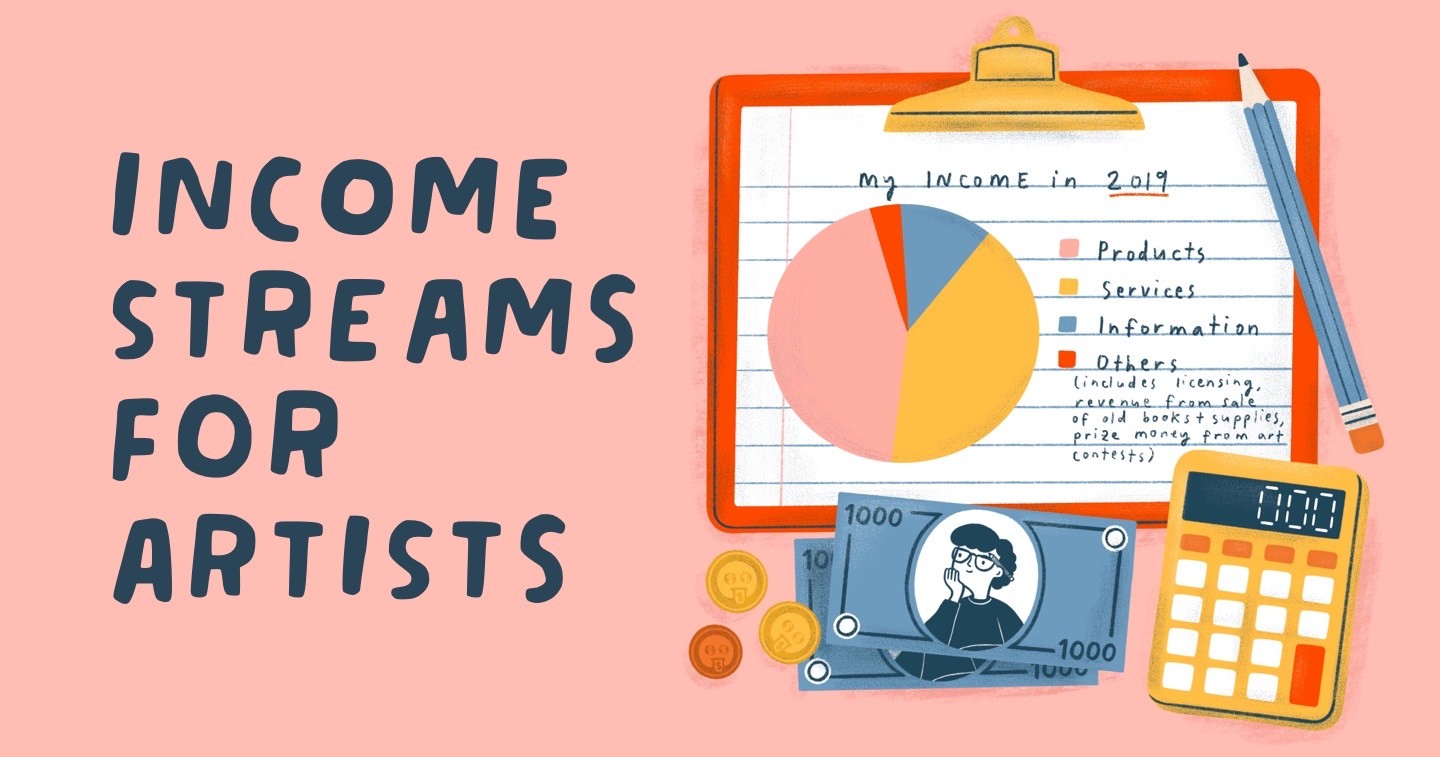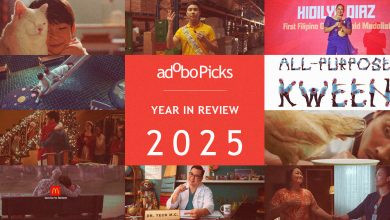MANILA, PHILIPPINES – Artist/illustrator Ella Lama shared an exclusively abridged version of her series “Income Streams for Artists,” where she aims to help other artists navigate their way through the industry.
Lama has previously facilitated the “Creative Career Roadmap” workshops for artists and entrepreneurs, where she discussed the basics of pricing, self-promotion, and business.
Read on for her reflections and tips:
I know there are a lot of people out there who feel uncertain about pursuing a creative path. Most of us have been told from a very young age that there’s no money in art, and that limiting belief can take root and discourage us from fully committing to starting and running art businesses. I get it, because I have been there before.
Before I went full-time freelance, I had already been selling products, teaching lettering workshops, and accepting client work. However, when I took the leap, I decided to rely solely on my retail sales (why, self, why?). That move cut my earnings significantly, and I had to quickly figure out how to turn things around. I managed to recover by diversifying my income.
The most obvious benefit of having multiple income streams is you stress less about money. As freelancers and small business owners, the conventional definition of “job security” doesn’t really apply to us. The best way we can protect ourselves from financial worries is to have money come in from different sources.
Diversification opens you up to opportunities you’ve never considered before and widens your reach. People who buy my products are almost always not the same people who hire me for custom illustrations. By showing my work to different sets of people, I am able to offer something that will be helpful or beneficial to all my market segments.
This setup has also enabled me to say no to projects that are not my forte or that I do not enjoy. This frees up some time, which I use for personal work. Sometimes these are purely for fun like using a new medium or trying a new technique, but they can also be geared towards marketing myself to potential clients in an industry I want to enter. I also feel less guilty about taking breaks because I don’t have to keep hustling all the time.
How do you go about creating various income steams? The first question I asked myself when I was starting out was “what can I sell?” What can you offer that people would be willing to pay money for? The possibilities are endless, but they usually fall under three categories.
Products
Products either as finished goods or tools that can help your customers make something of their own.
Physical products are mostly printed versions of an artwork used for decorative purposes. Examples are paper goods, apparel, accessories, and home decor. You can choose to fund or do the production yourself and sell directly from your website or local partner stores (this is what I do). You can also charge premium prices for limited edition or one-off pieces. If you do not want to take care of logistics, you can upload your designs to print-on-demand marketplaces.
Another option is to sell your art as digital products, such as clip art, themed illustrations, and printable. You can also make tools to help your customer come up with projects on their own (fonts, presets, templates, etc.).
Services
I usually classify my service-based projects based on whether I was hired by individuals (personal commissions) or companies (corporate commissions). They both require dealing with clients and creating custom art based on their requirements. You may be asked to illustrate anything from family or pet portraits and invitations, to packaging and advertisements. The pay range varies widely, too, which is usually dependent on budget, usage rights, and complexity of the project.
Information
The first possibilities that come to mind here are holding workshops and teaching classes, but there are a lot of ways you can share your expertise, such as creating tutorials, writing how-to books and manuals, and offering one-on-one consultations. You don’t even have to have exclusively art-related knowleged-based offerings. Examine your skills and see which of them can be helpful to your potential students.
The formula that has worked for me the best is to offer all three categories. This is what I mean by serving different segments of my market. The more I can offer, the bigger audience I can serve. By offering a variety of products and services, I feel more secure in meeting my personal budget.
Here are my current income sources (see graphic). I try to keep the slices of my pie fairly even, so as you can see, the information stream needs a lot of adjustments to catch up to products and commissions. Another important thing to note is to try to have multiple channels for one income stream. While retail shops earn me the most in terms of product sales, I also make an effort to take wholesale orders and join events (I know online should be my priority, though–working on that this year). Aside from taking on corporate projects, I also work on personal commissions from time to time.
In order to make this setup to work for you, you must examine your numbers. I know a lot of you would rather skip this step, but you need to study your current income to establish a baseline and see where you can tap opportunities to earn more. Aside from your earnings, also take note of the amount of time you are currently spending on each of your income sources, as well as the expenses each of them incur. This will allow you to see which streams are most profitable and which can be optimized.
Once you have your figures down, it’s time to analyze your process. What energizes you? What are you excited to work on? At which tasks do you find yourself procrastinating? Which parts do you dread? Dig deep so you can find the right income streams for you. Focus on what comes naturally, and don’t go against your own nature. It’s no use earning money from something that just stresses you out.
Don’t forget to promote, promote, promote! I feel like a lot of creatives think of “marketing” and “self-promotion” as dirty words, but there are ways to sell without sounding too aggressive or desperate. Find your voice and use it. Tell your customers a story. The important thing is to make sure people are aware of what you do and what you offer: hopefully a few of them need what you have and you convert a sale. If not, find a new group of people and tell them about your products and services. The more you do it, the easier it becomes.
Lastly, avoid getting overwhelmed by adding new income streams one at a time. Think of your income streams as seeds. You have to watch them, water them, and tend to them, until one day you see them sprout and eventually grow. It doesn’t just take a fortnight to turn a profit. Sometimes it takes weeks, months, or even years!
When you have little to no income, it is easy to feel sad and blame your art and yourself for not being good enough. That’s simply not the case. I took the risk of putting all my eggs in one basket, and my gamble did not pay off. Losses can be avoided when you diversify. When one door closes, you don’t immediately think “it’s the end of the world,” you learn to say “okay, what can I do with the rest of my resources that remain.” It’s not easy, but it’s worth it, especially if the reward is confidence in your work and in yourself, and peace of mind.
Like what you find? Join the discussion tonight, Wednesday, May 20, in partnership with Taxumo where she’ll lead their first “Passion Forward” webinar, part of the #TimeforHOPE initiative (Time For Helping Other Professionals and Entrepreneurs) via Facebook Live
or, check out Income Streams for Artists:
Part 3 – How to Manage Your Income Sources











